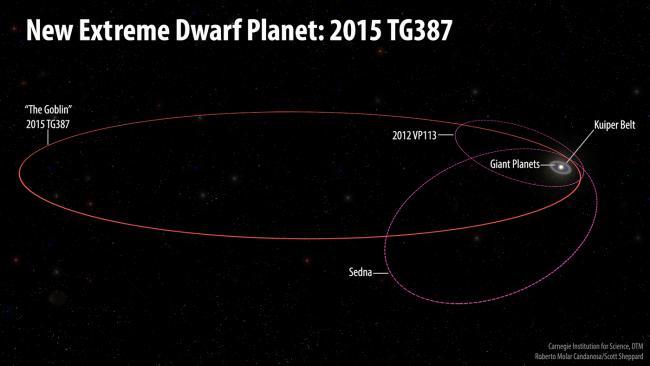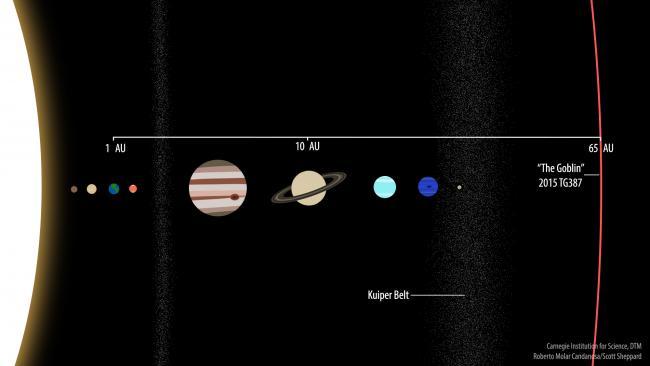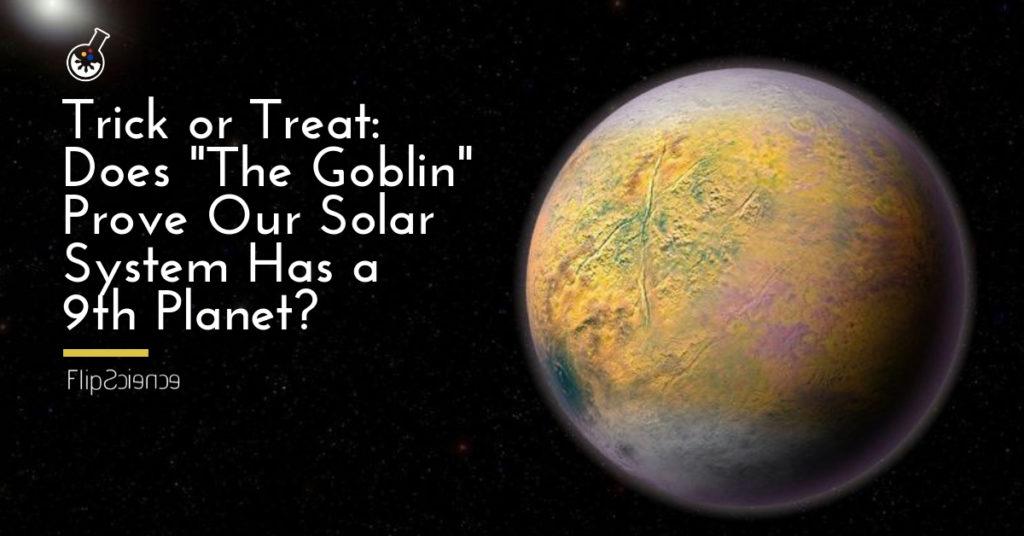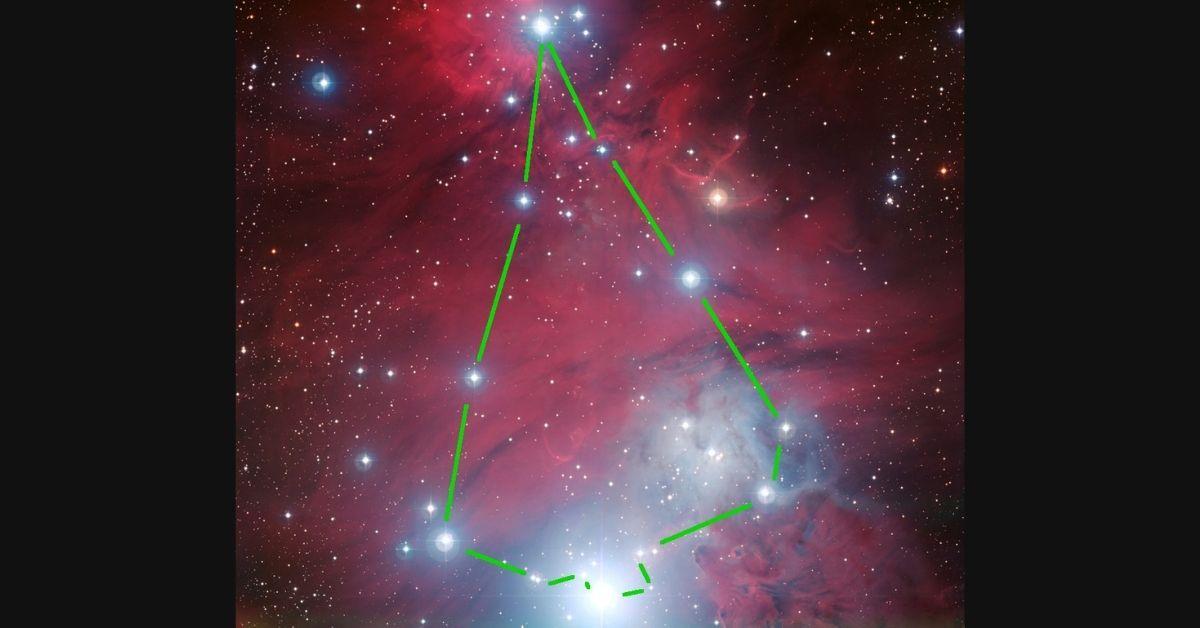As children, many of us learned about the Solar System’s nine planets from our science teachers and books. This, to us, was undeniable fact — until Pluto’s reclassification to “dwarf planet” in 2006 by the International Astronomical Union (IAU), that is.
Still, the idea that planets farther away than Neptune revolved around our Sun persisted. Now, one particularly popular idea — the existence of a mysterious “super-Earth” called Planet 9 or Planet X — just received a boost of cosmic proportions. It’s all thanks to a surprise sednoid (the term for natural objects within the Solar System lying outside Neptune’s orbit) that popped up on astronomers’ radars three years ago, just in time for Halloween.
The curious case of the globular Goblin
First sighted on October 13, 2015, the trans-Neptunian object 2015 TG387 lies about 80 astronomical units (AU) from the Sun. (For reference, one AU equals the distance between Earth and the Sun — 149,597,870.7 km, or 92,955,807.3 mi.)
2015 TG was nicknamed “The Goblin” due to the “TG” in its name and the timing of its discovery. The Goblin has an estimated diameter of ~300 km, and takes an astounding 40,000 years to revolve around the sun.
It joins two other minor planets, 2012 VP113 and 90377 Sedna, on the list of trans-Neptunian objects with perihelions (the point in a minor planet’s orbit where it is closest to the Sun) seemingly unaffected by Neptune’s gravity. The Goblin has the third most-distant perihelion at 65 AU, surpassed only by 90377 Sedna’s 76 and 2012 VP113’s 80.
However, The Goblin’s orbit extends much farther from the Sun — up to 2,300 AU, to be precise.

The orbit of 2015 TG387, also known as “The Goblin.” (Image: Roberto Molar Candanosa & Scott Sheppard/Carnegie Institution for Science)
“These so-called Inner Oort Cloud objects like 2015 TG387, 2012 VP113, and Sedna are isolated from most of the Solar System’s known mass, which makes them immensely interesting,” said Scott Sheppard, an astronomer from the Carnegie Institution for Science and the Goblin’s co-discoverer.
“They can be used as probes to understand what is happening at the edge of our Solar System.”
The powerful pull of Planet X
Sheppard, along with Northern Arizona University’s Chad Trujillo and the University of Hawaii’s David Tholen, observed the Goblin via the Subaru Telescope at the Mauna Kea Observatories in Hawai’i.
It was also Sheppard and Trujillo who co-discovered 2012 VP113. This eventually led them to propose the idea of Planet X’s existence.
“We think there could be thousands of small bodies like 2015 TG387 out on the Solar System’s fringes, but their distance makes finding them very difficult,” explained Tholen. “Currently, we would only detect 2015 TG387 when it is near its closest approach to the Sun. For some 99 percent of its 40,000-year orbit, it would be too faint to see.”

“The Goblin” shown with the rest of the known planets in the Solar System. (Image: Roberto Molar Candanosa & Scott Sheppard/Carnegie Institution for Science)
Interestingly, all three secnoids have similar locations in the sky. This suggests that a stronger trans-Neptunian force — quite possibly Planet X — is determining their orbits.
Trujillo and the University of Oklahoma’s Nathan Kaib ran simulations of hypothetical Planet X orbits. They did this to see how each hypothetical orbit would affect the path of the Goblin. Amazingly, most of the simulations demonstrated that, for the Solar System’s age, the Goblin’s orbit was stable. Additionally, Planet X’s gravity actually keeps the Goblin (and its fellow secnoids) away from the massive planet and on their respective orbits.
Still, according to Trujillo, these tests aren’t enough to prove that Planet X actually exists. However, they do provide compelling evidence that “something big could be out there.”
The team recently submitted their findings to The Astronomical Journal. Meanwhile, the IAU’s Minor Planet Center announced the Goblin’s existence on October 2, a day after the National Aeronautics and Space Administration (NASA) officially celebrated its 60th anniversary.
Cover photo: Roberto Molar Candanosa & Scott Sheppard/Carnegie Institution for Science
References
- https://arxiv.org/pdf/1810.00013.pdf
- https://carnegiescience.edu/news/new-extremely-distant-solar-system-object-found-during-hunt-planet-x
- https://ssd.jpl.nasa.gov/sbdb.cgi?sstr=3830896#content
- https://www.smithsonianmag.com/science-nature/new-discovery-goblin-stirs-signs-elusive-planet-9-180970442
Author: Mikael Angelo Francisco
Bitten by the science writing bug, Mikael has years of writing and editorial experience under his belt. As the editor-in-chief of FlipScience, Mikael has sworn to help make science more fun and interesting for geeky readers and casual audiences alike.







